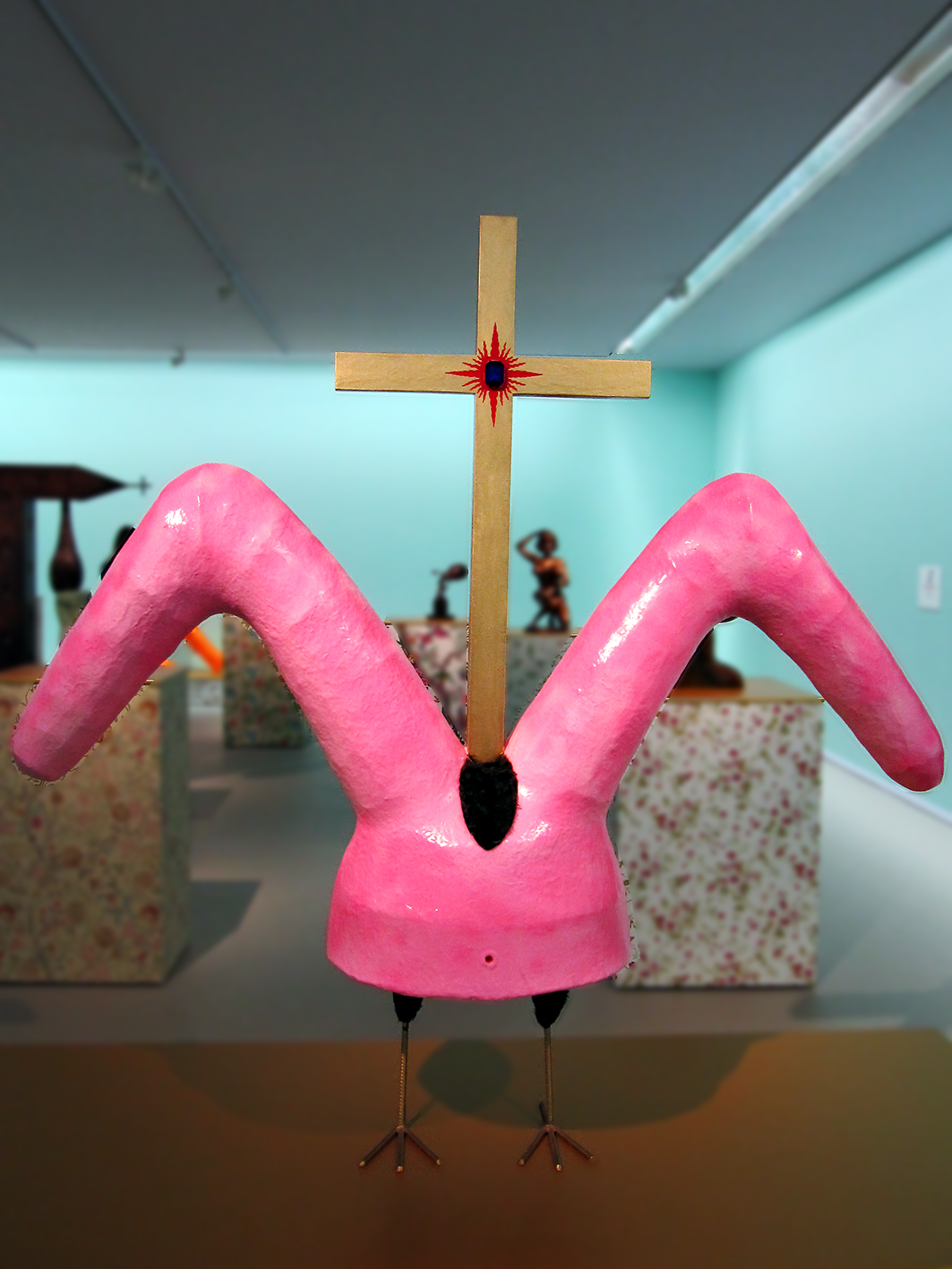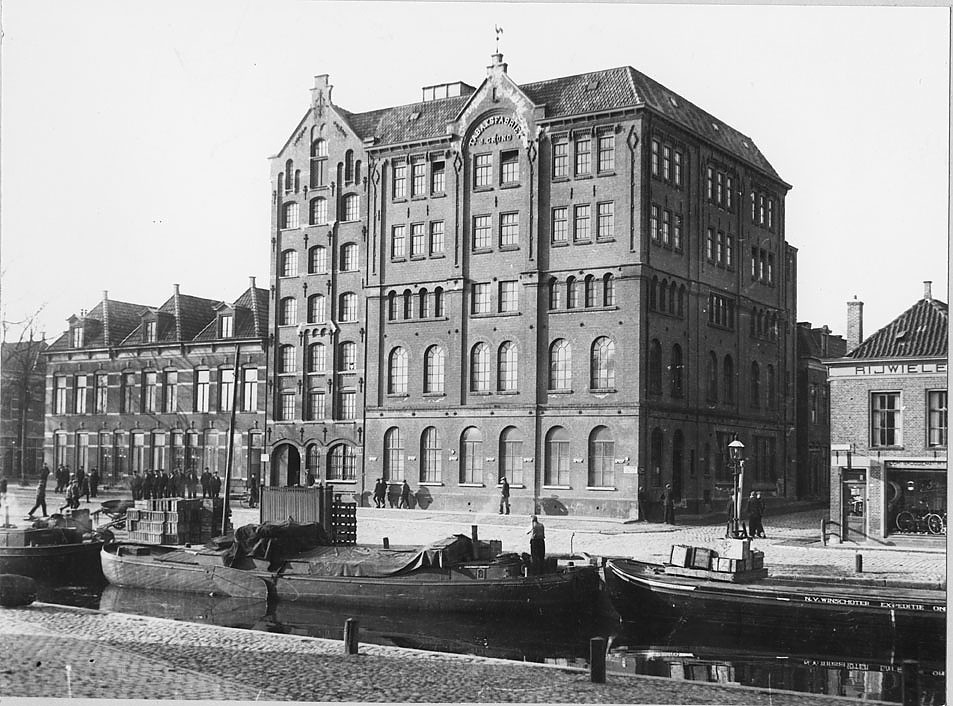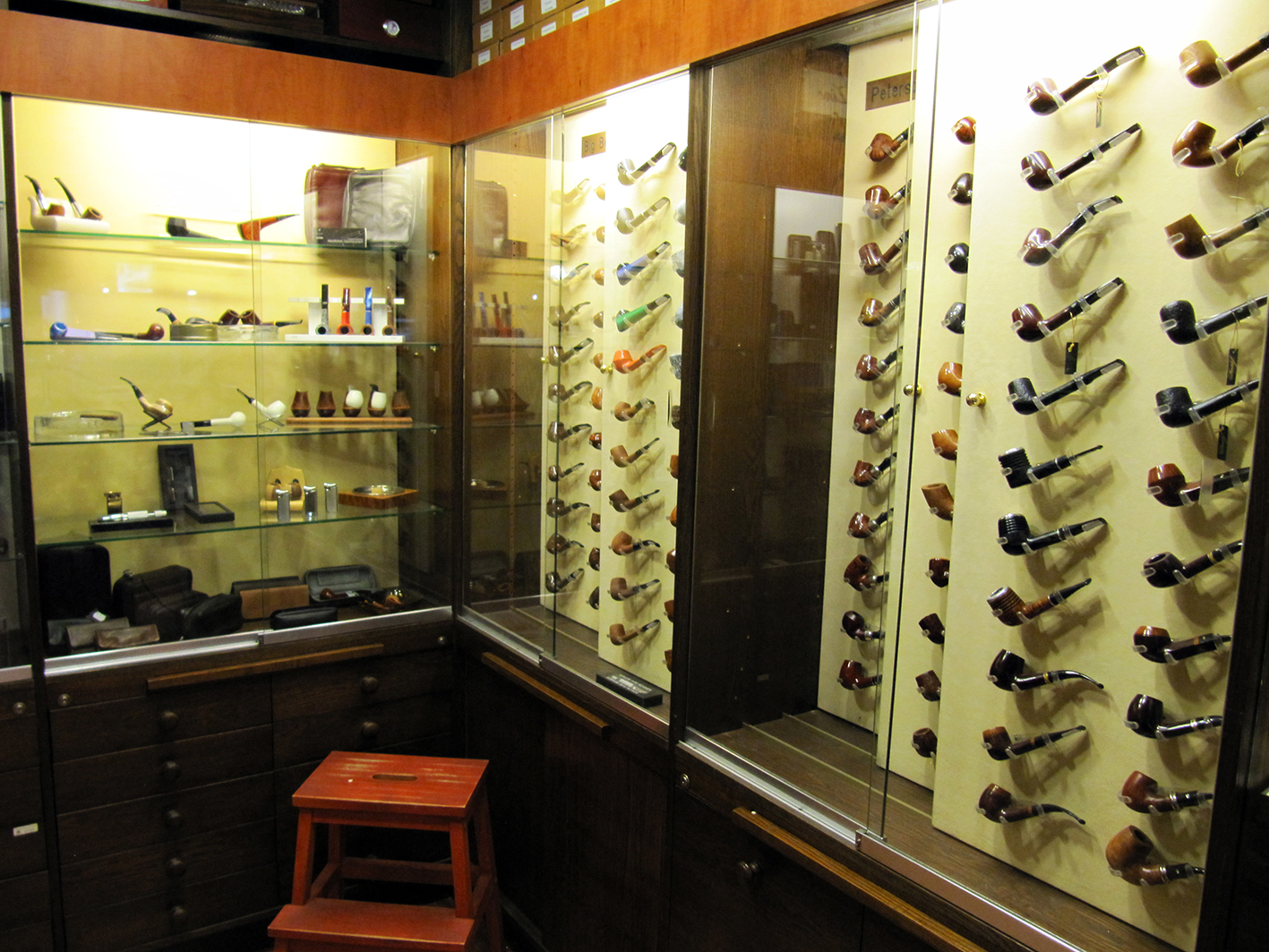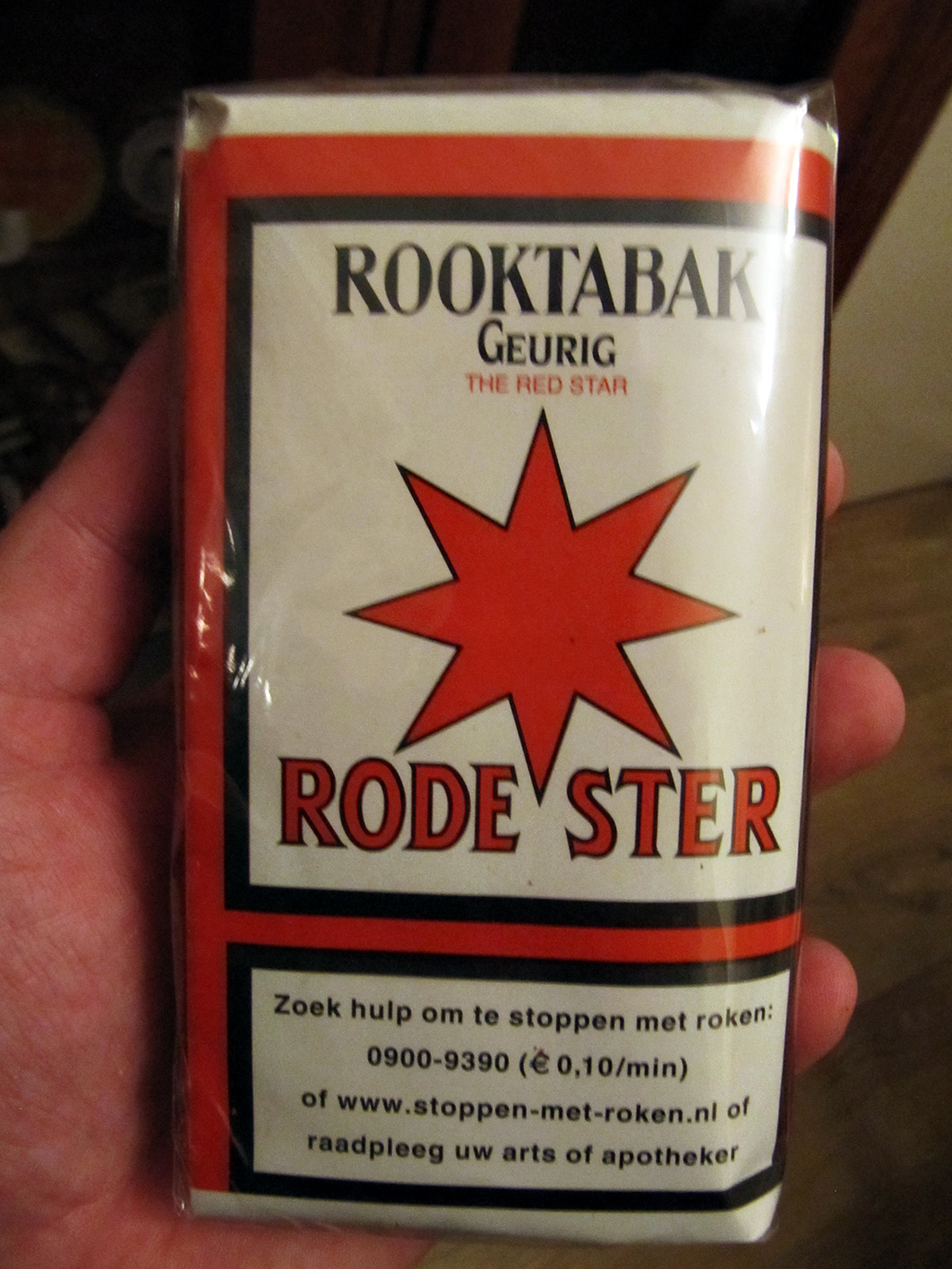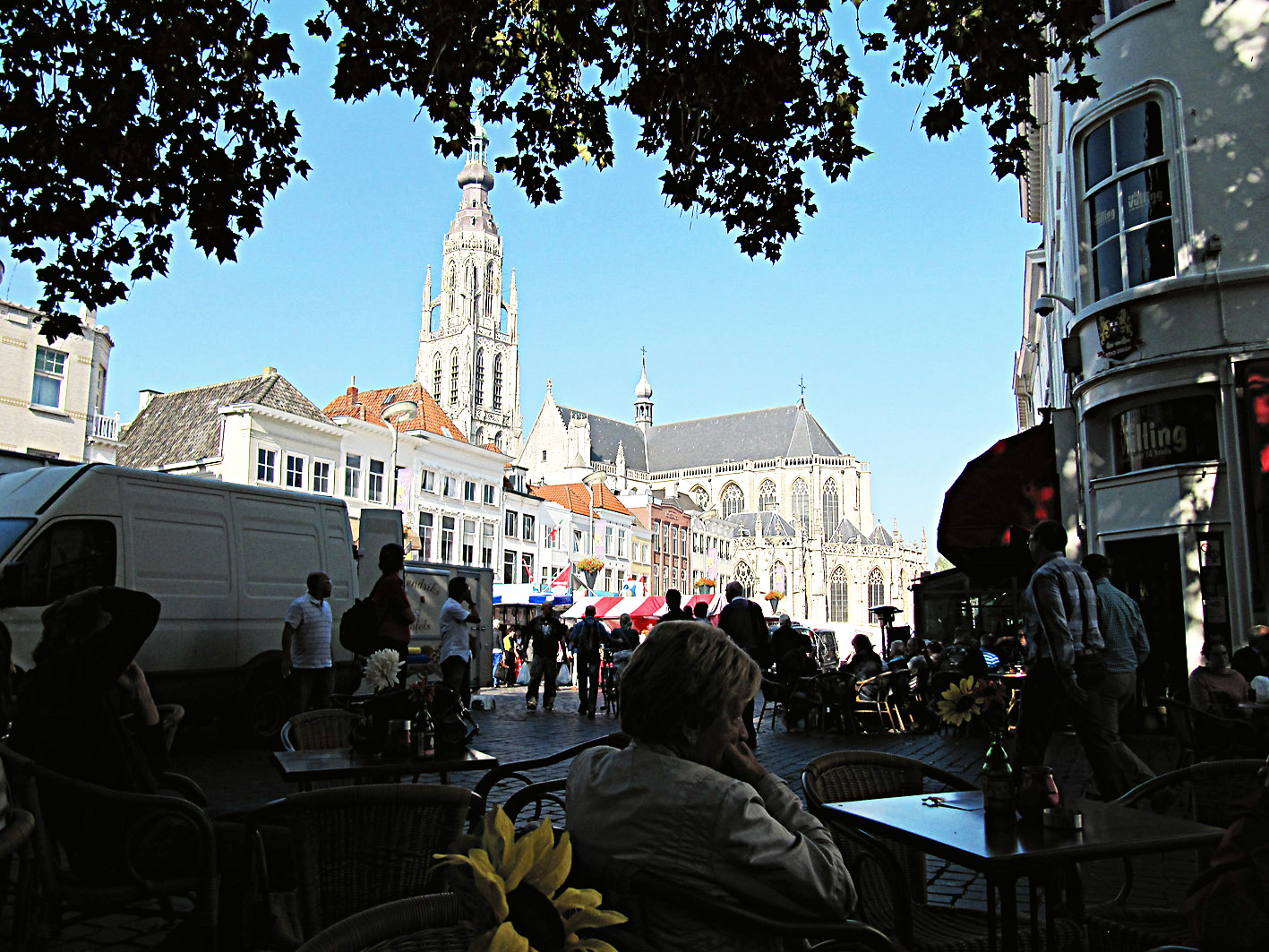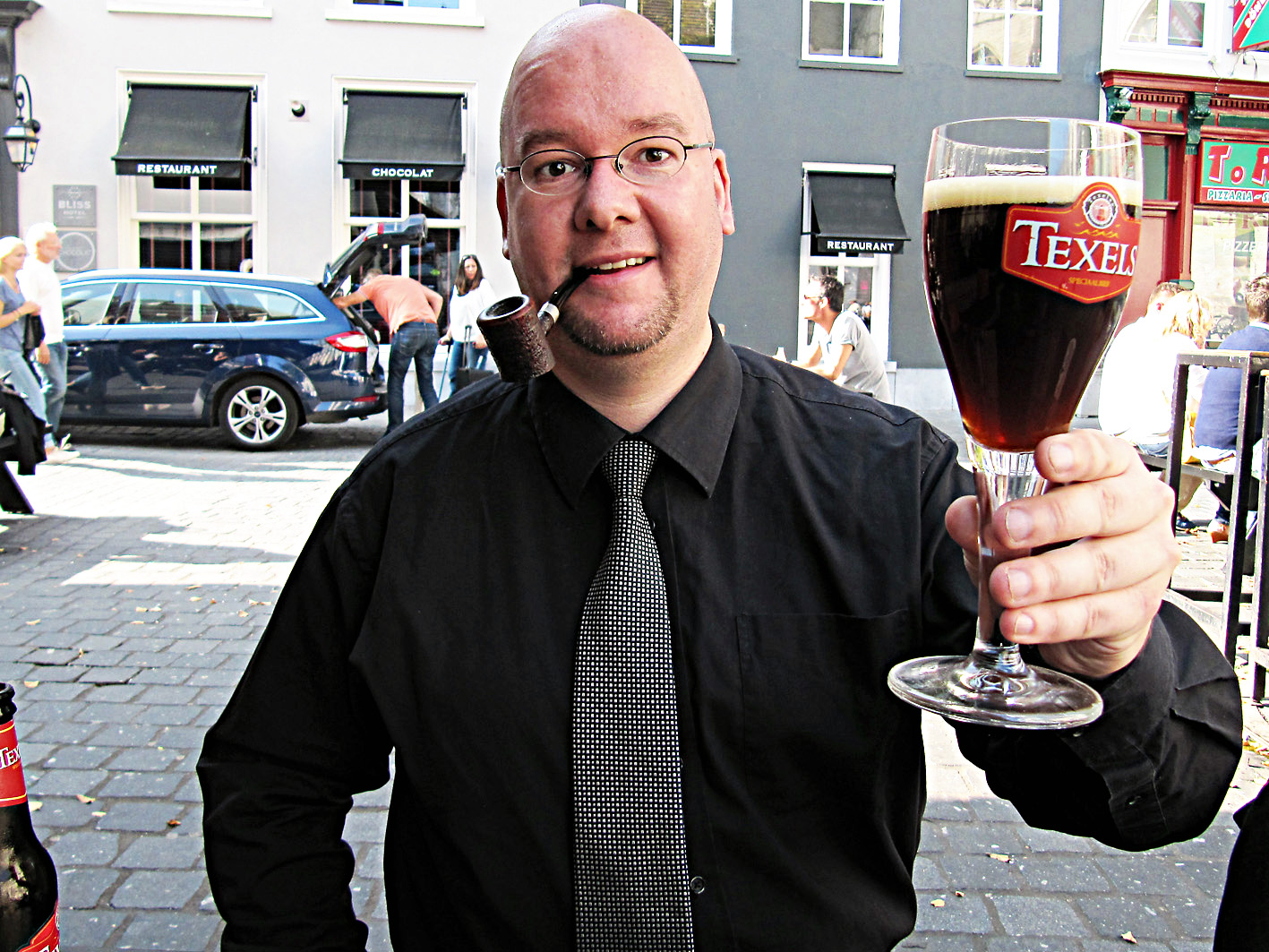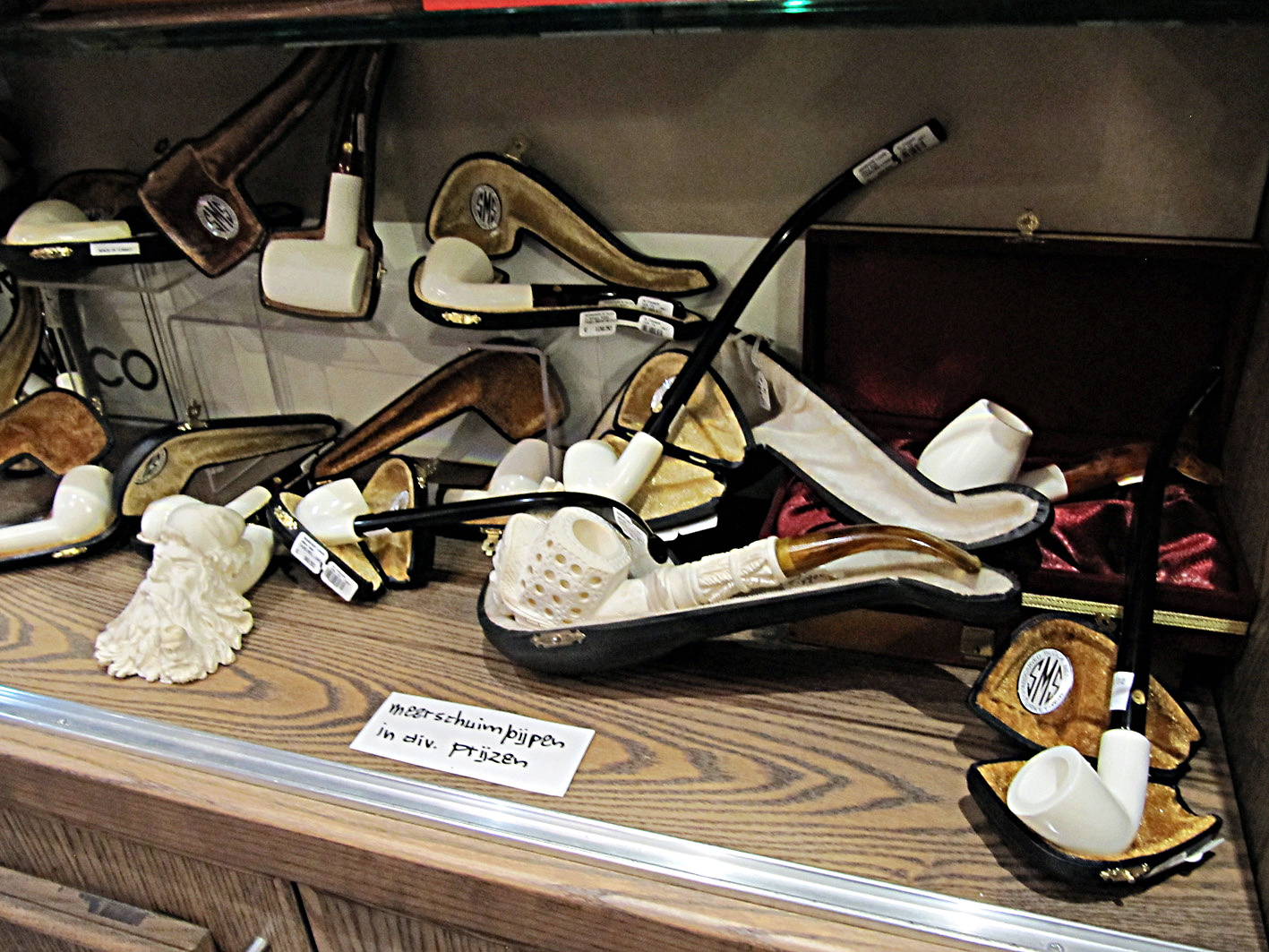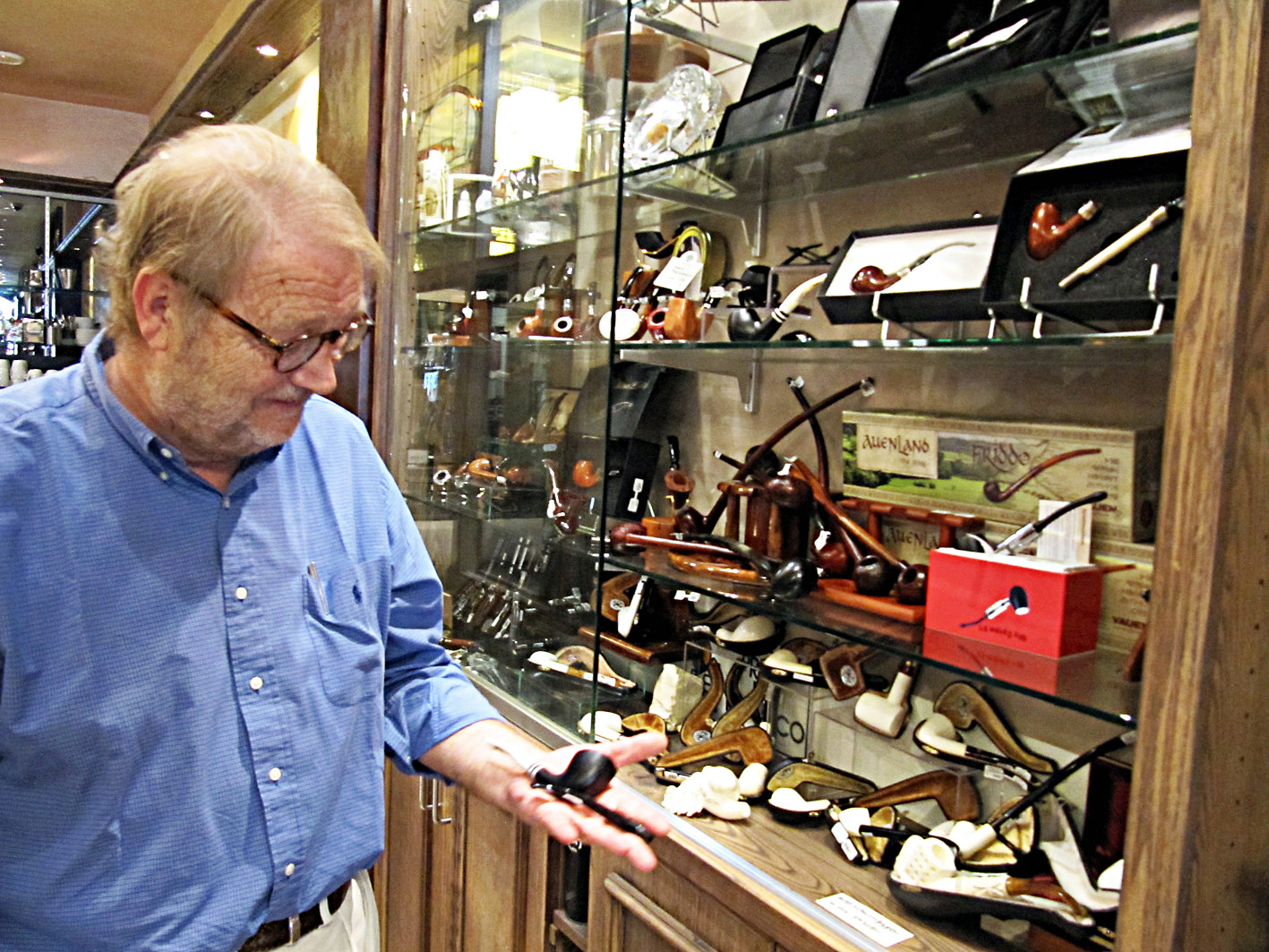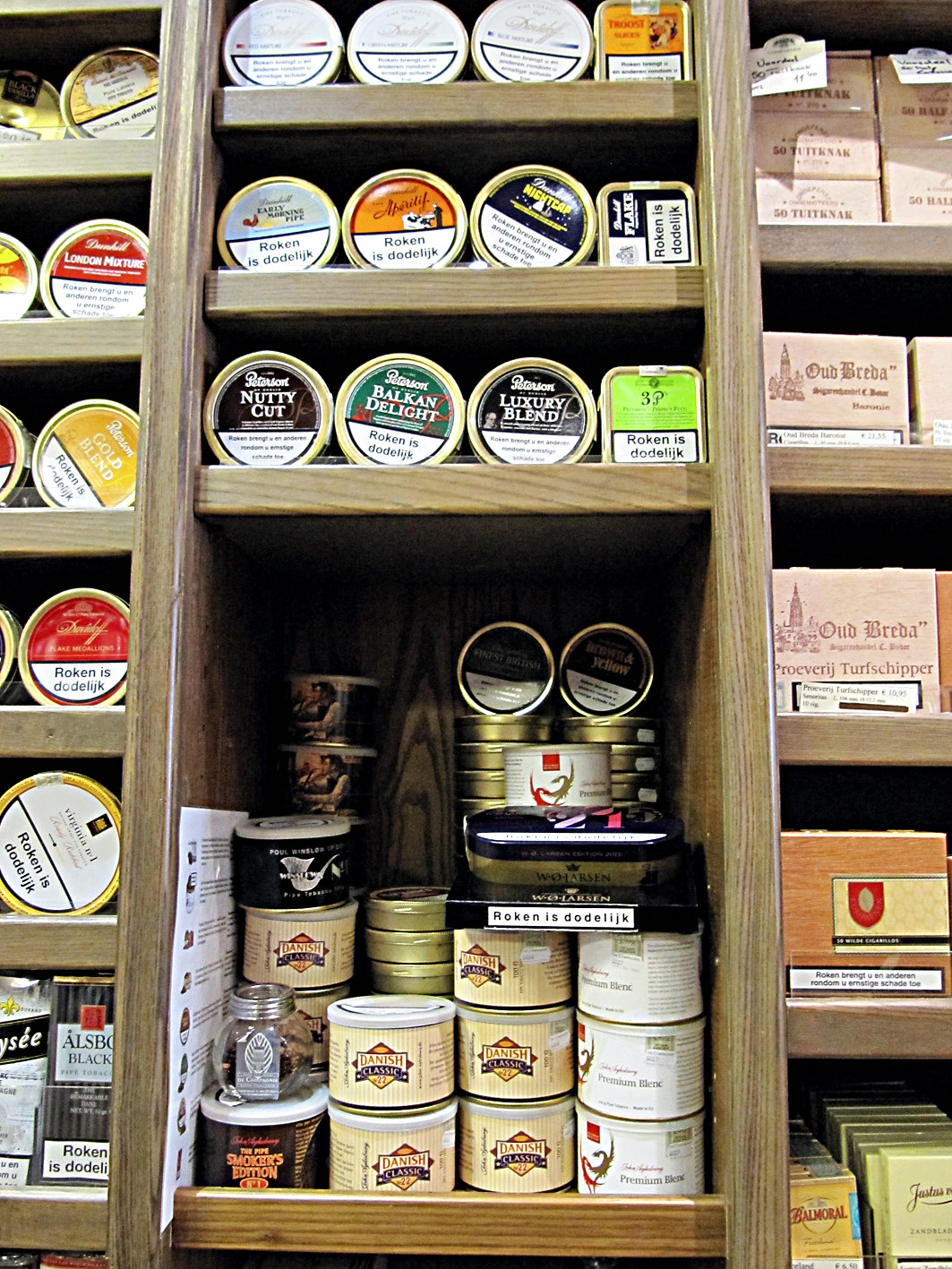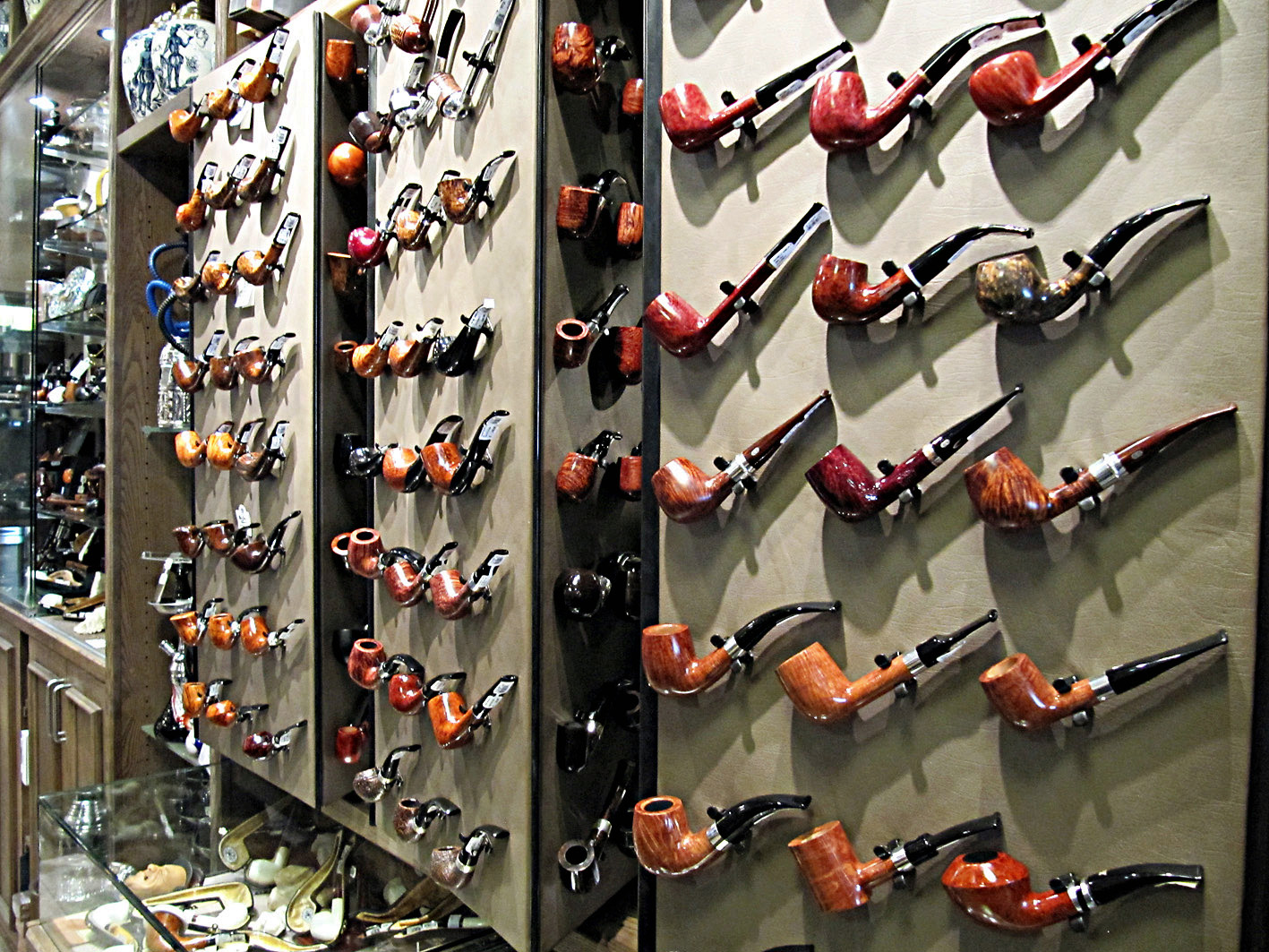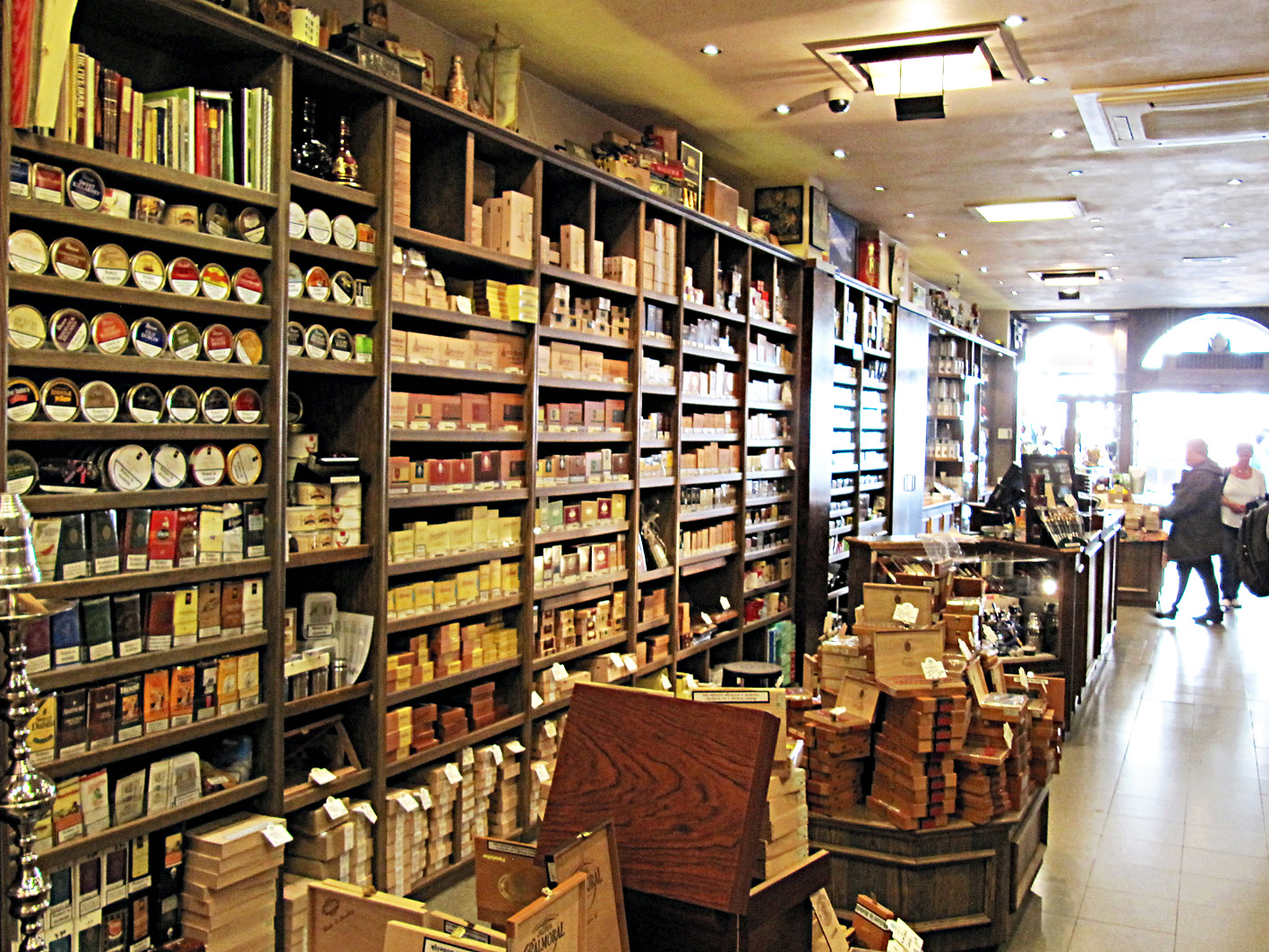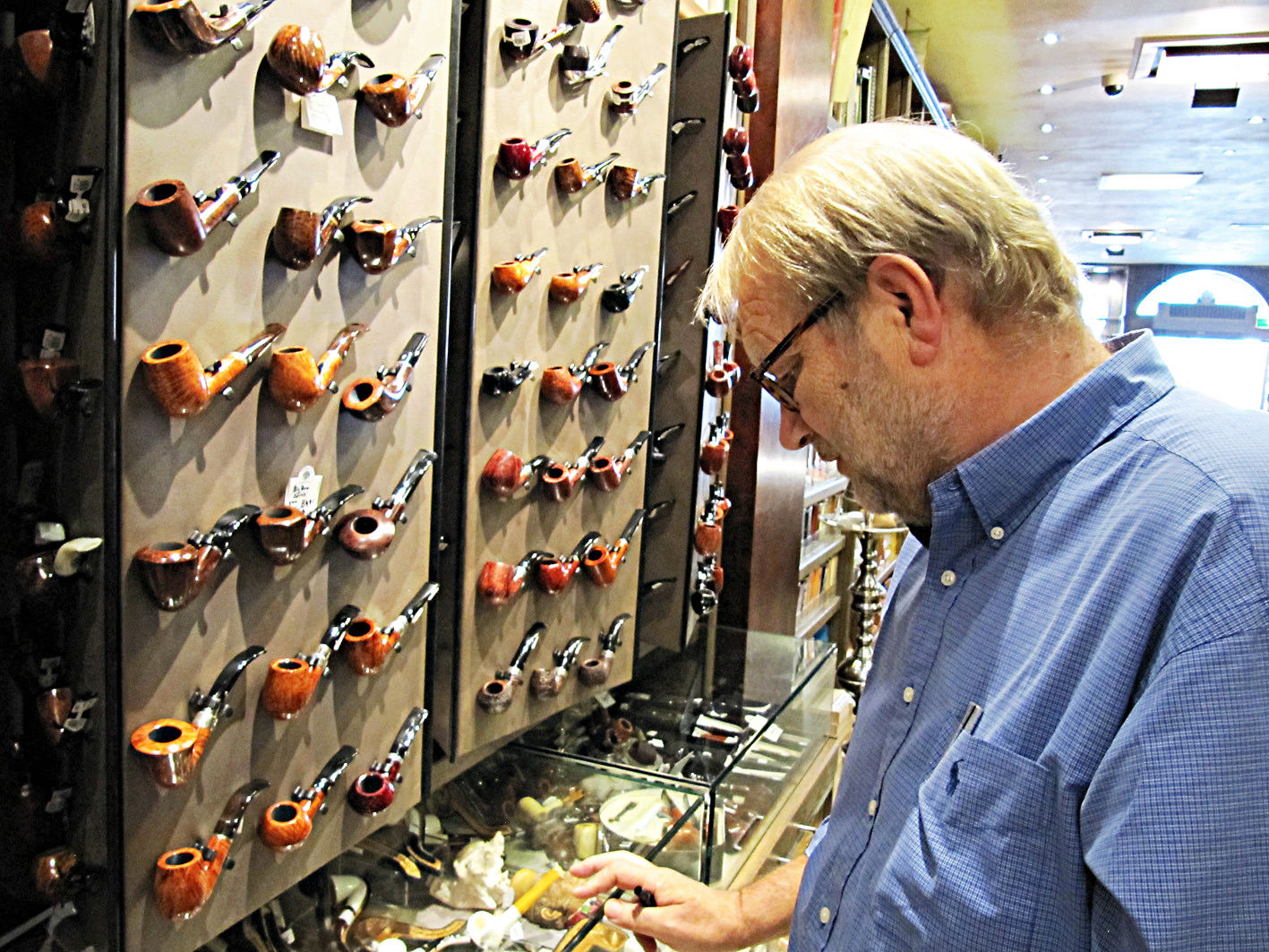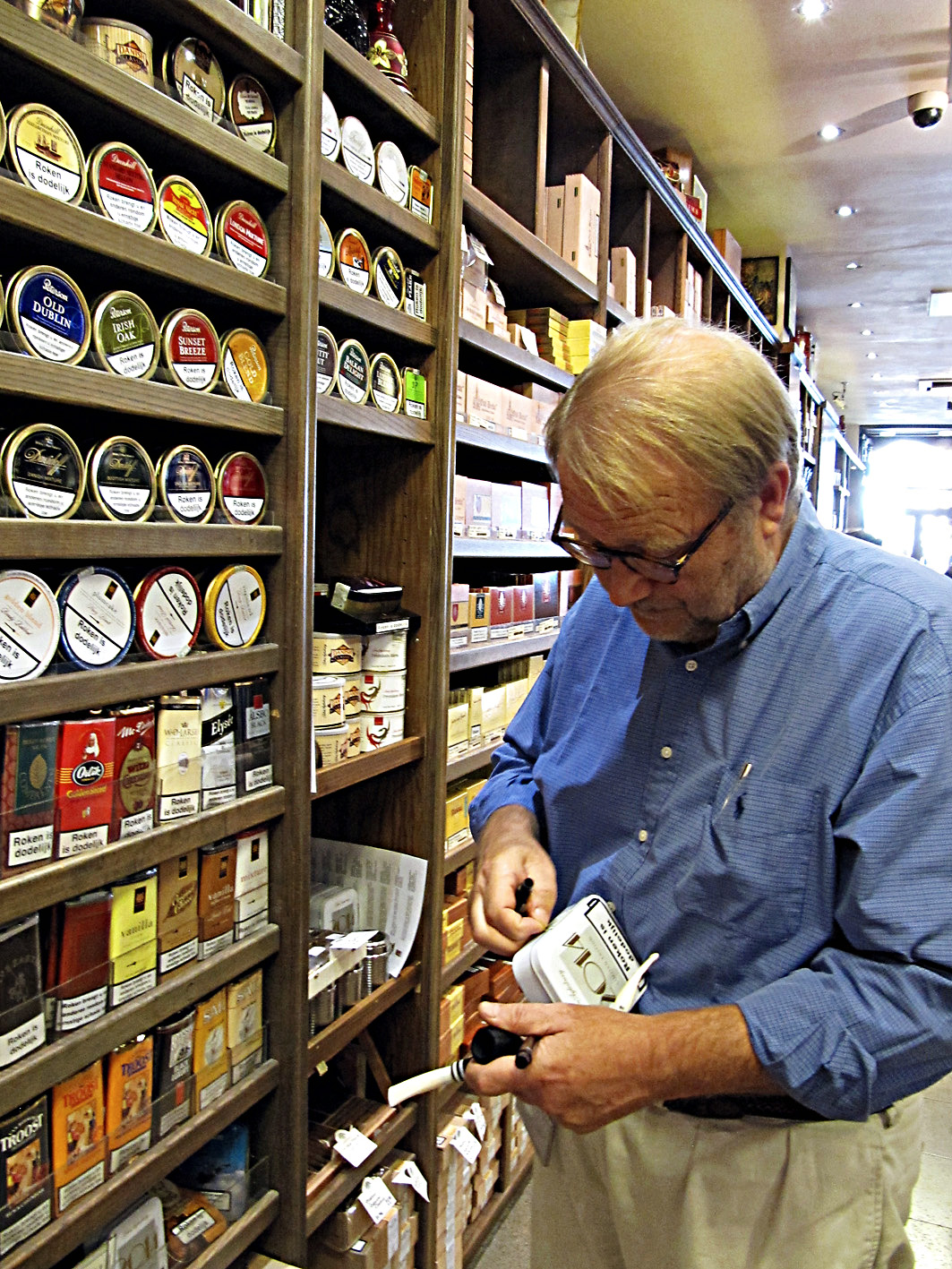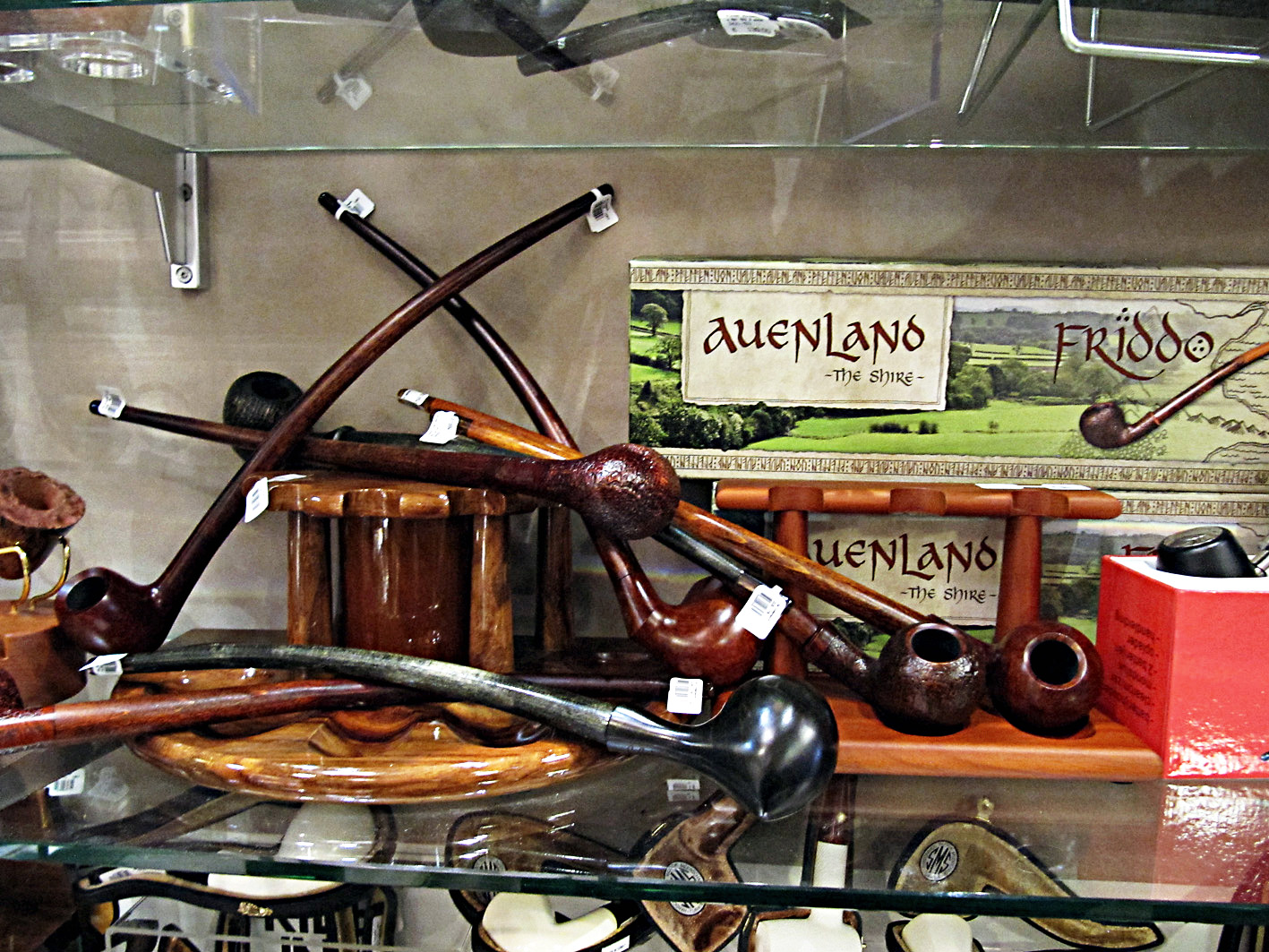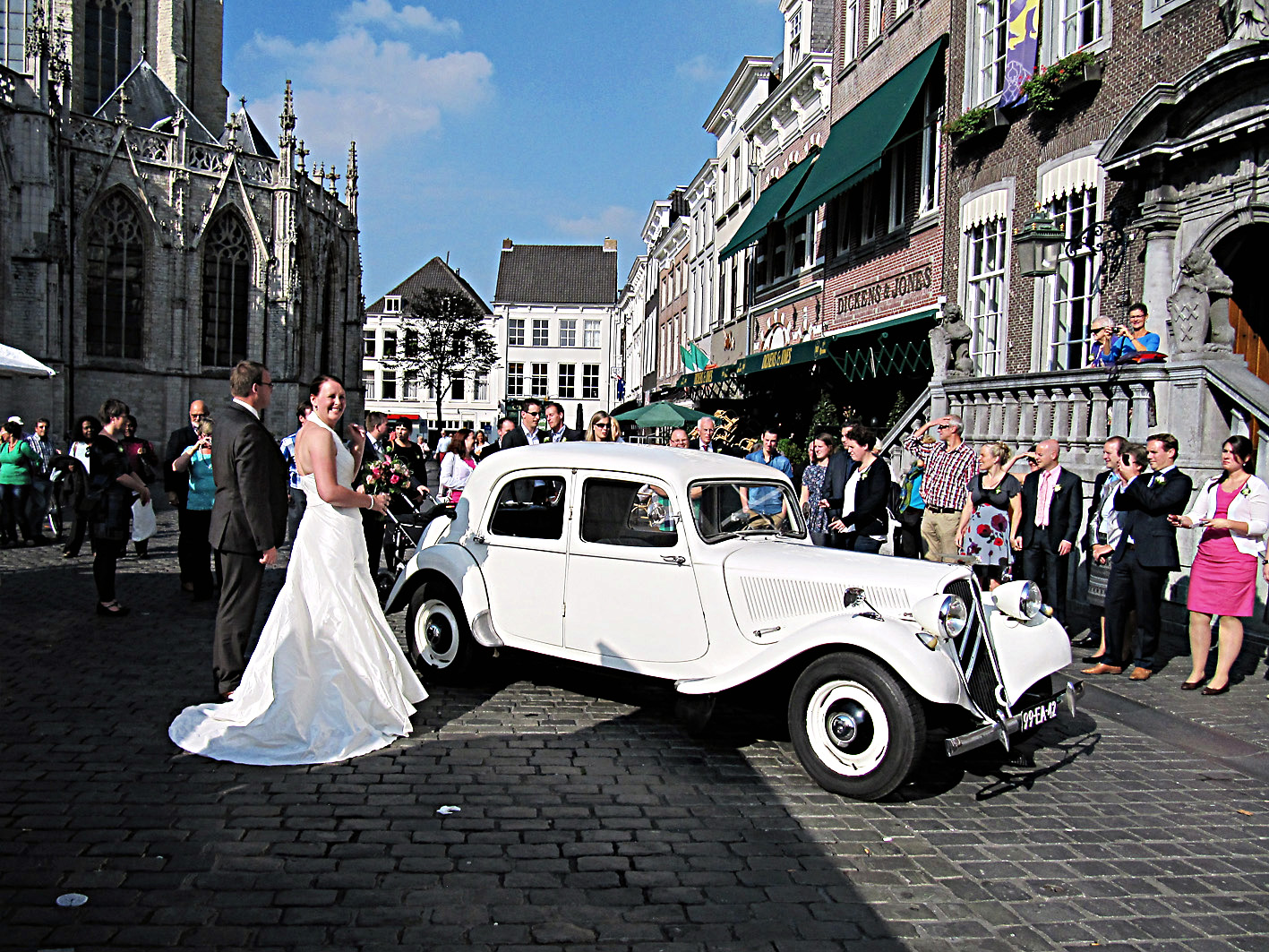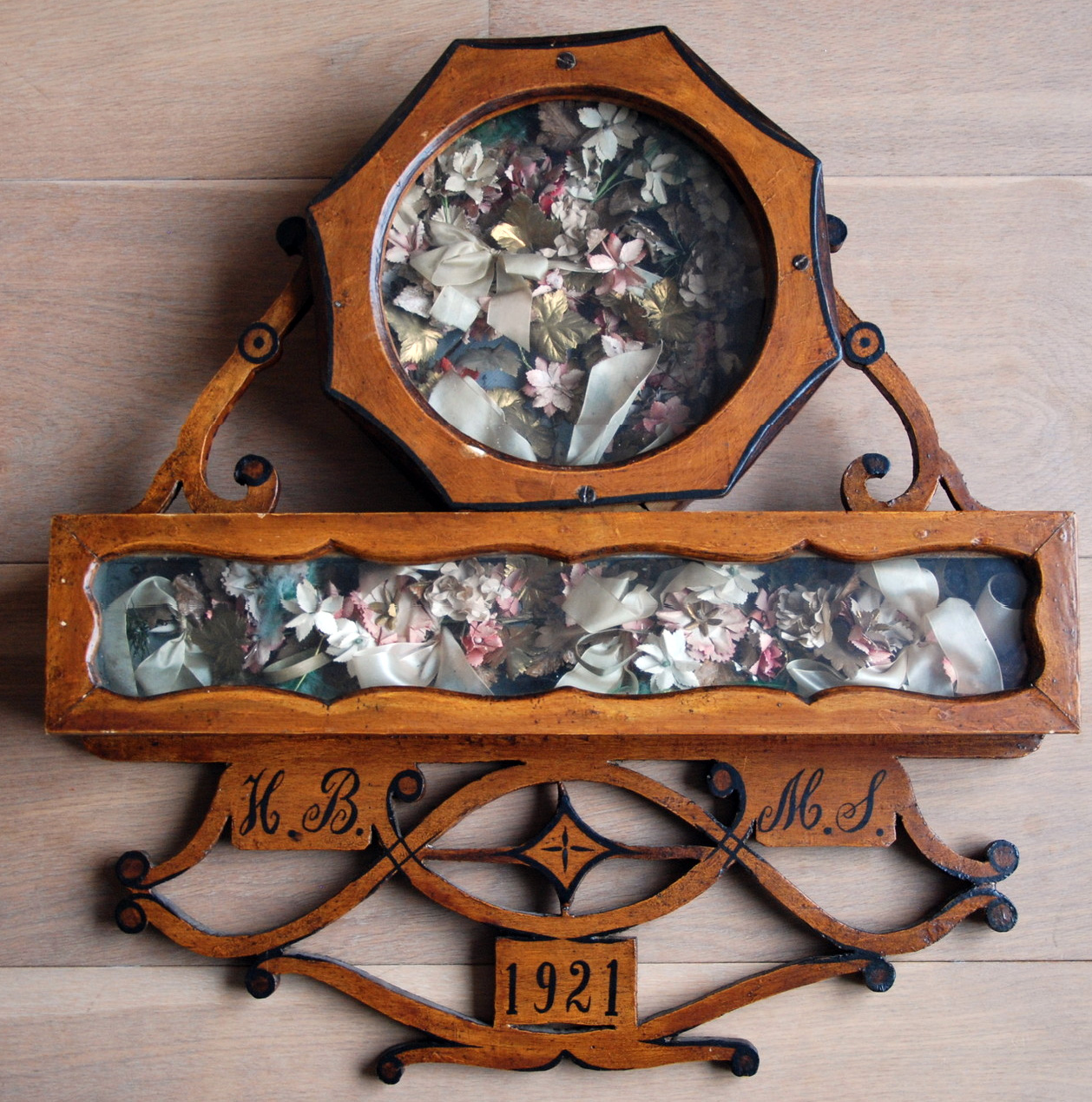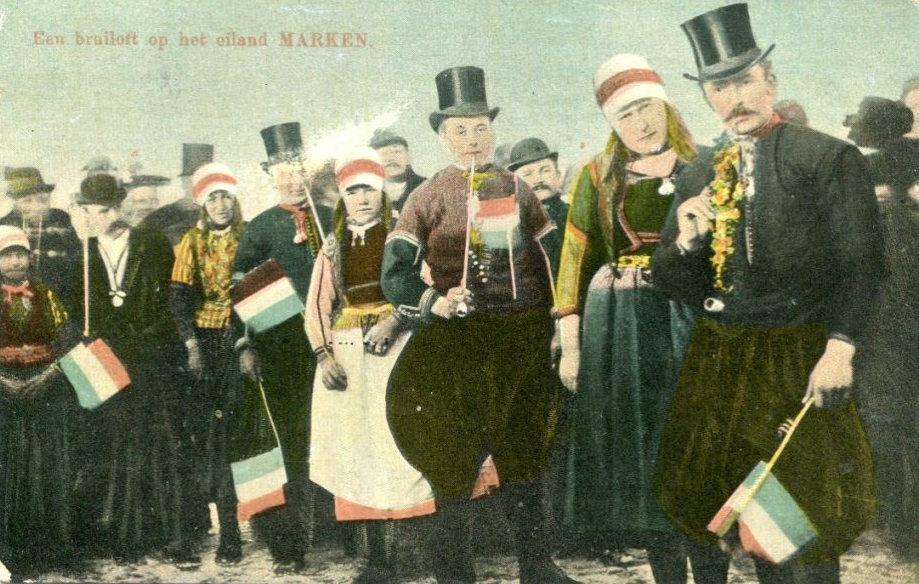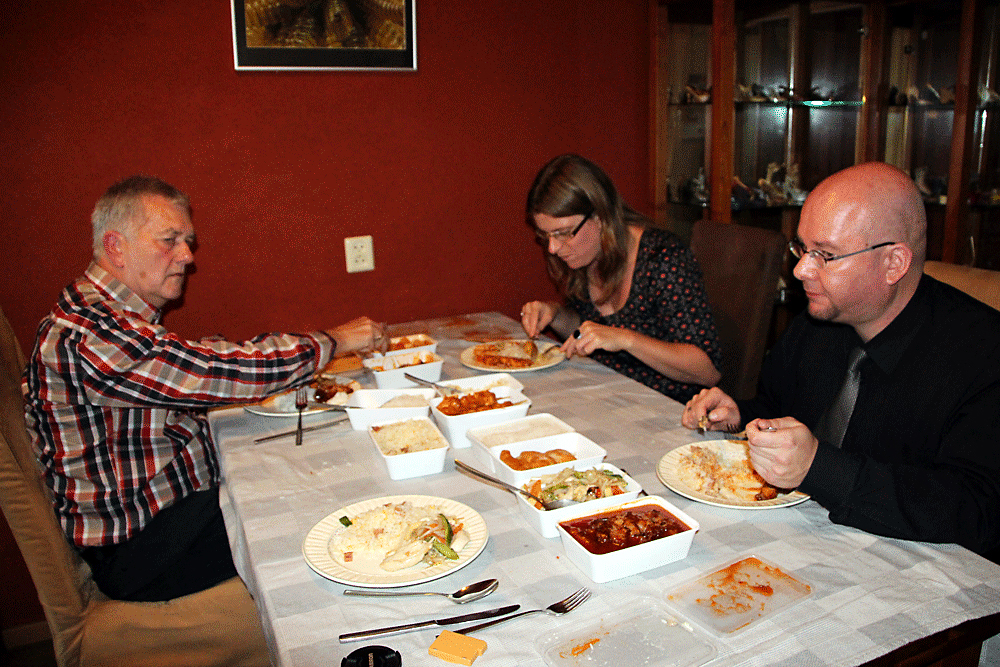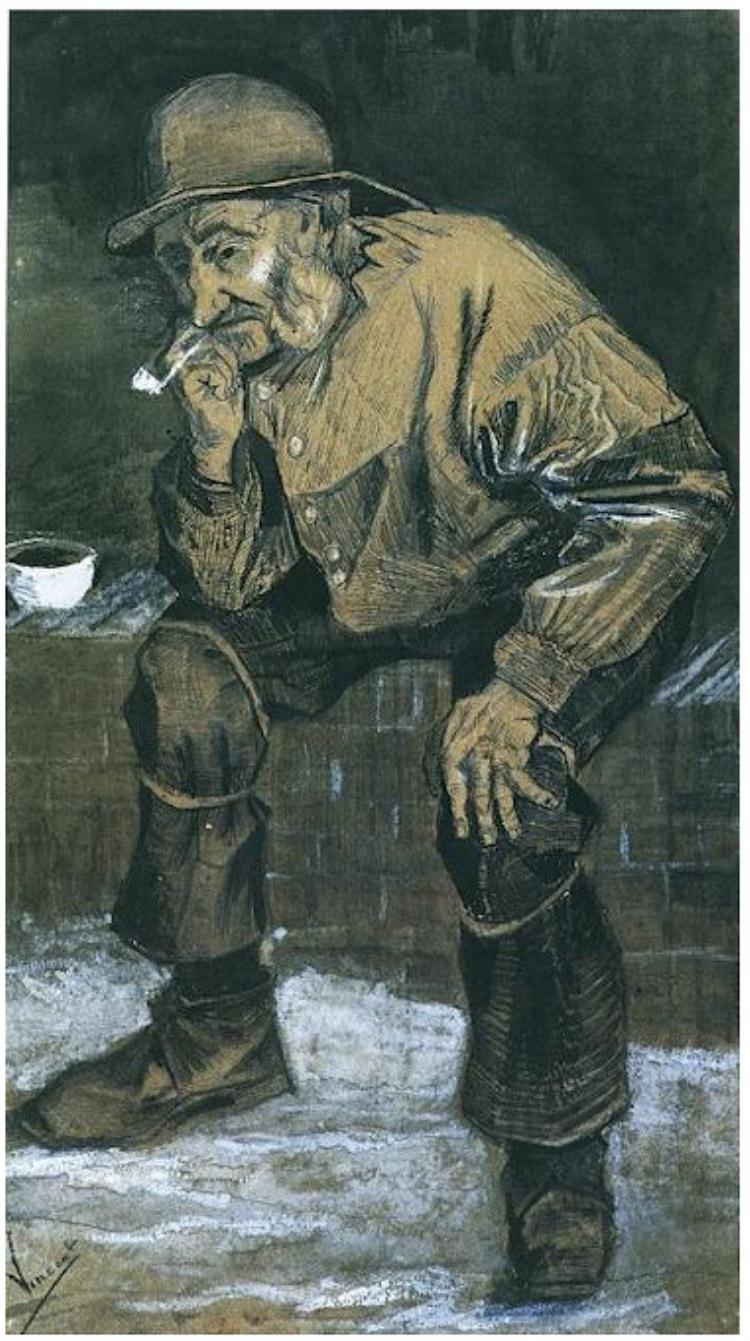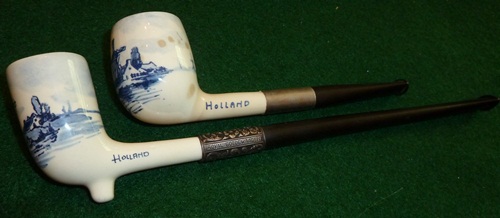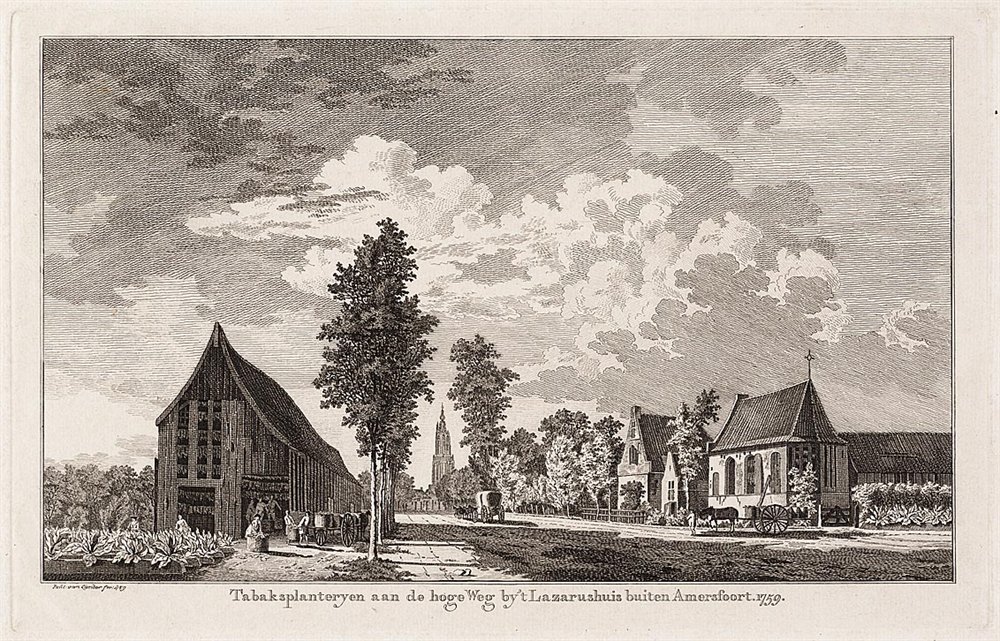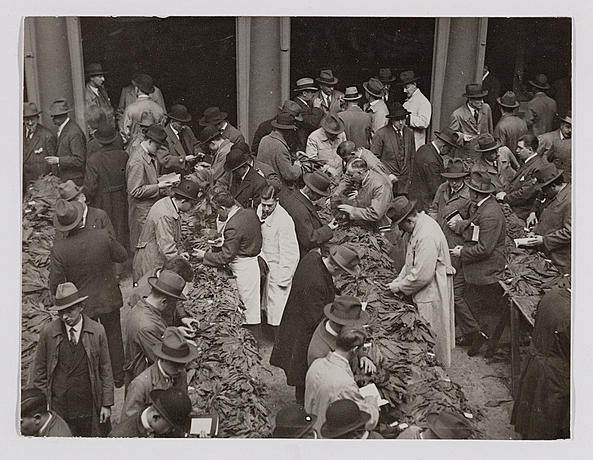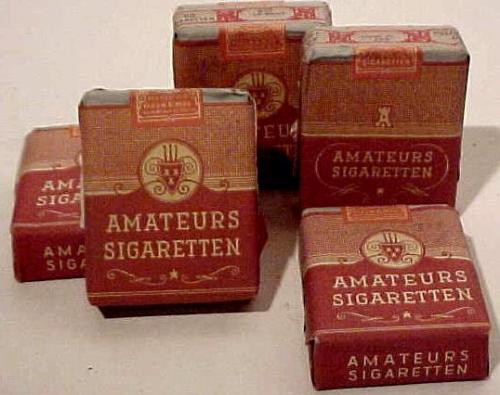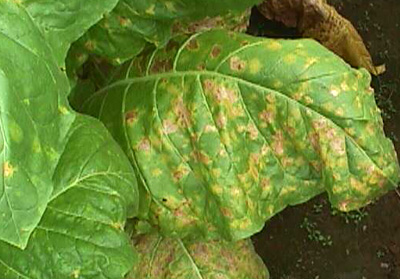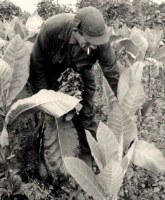 All the way in the North-East of The Netherlands lies the province of Groningen with its capital (also called) Groningen. Very handy when I had geographical tests in primary school, never got it wrong. Groningen is an old city, once a member of the German Hanseatic League, with a rich tobacco history, of which sadly little is left.. On a cold, windy but dry Saturday Ellen and I embarked upon a journey to the North. For most Dutch people Groningen feels like the other end of the civilized world. Since we are already living halfway The Netherlands for us it just was a 1.5 hour ride with the train. Before we went I already looked up (cultural) places to visit and found them: the Groninger Museum, the Universiteits Museum and the Noordelijk Scheepvaartmuseum.
All the way in the North-East of The Netherlands lies the province of Groningen with its capital (also called) Groningen. Very handy when I had geographical tests in primary school, never got it wrong. Groningen is an old city, once a member of the German Hanseatic League, with a rich tobacco history, of which sadly little is left.. On a cold, windy but dry Saturday Ellen and I embarked upon a journey to the North. For most Dutch people Groningen feels like the other end of the civilized world. Since we are already living halfway The Netherlands for us it just was a 1.5 hour ride with the train. Before we went I already looked up (cultural) places to visit and found them: the Groninger Museum, the Universiteits Museum and the Noordelijk Scheepvaartmuseum.
We started at the Groninger Museum since it was near the beautiful train station. Just look up if you are there, then you will know what I mean. The entry-fee for the museum was cheaper than normal. It turned out they were between expositions. Luckily there was still enough to see. The museum tends towards modern art (normal-wise not my favourite) but to my delight they had some interesting pieces. I especially had to laugh when I saw some sculptures made by Joost van Den Toorn. I mean, a statue on birds legs of the naked upside down part of a woman with a big cross put in the vagina is bound to bring a smile on my face. There also were some older paintings and like always I did my game of “spot the smoking pipe”. And I found some!
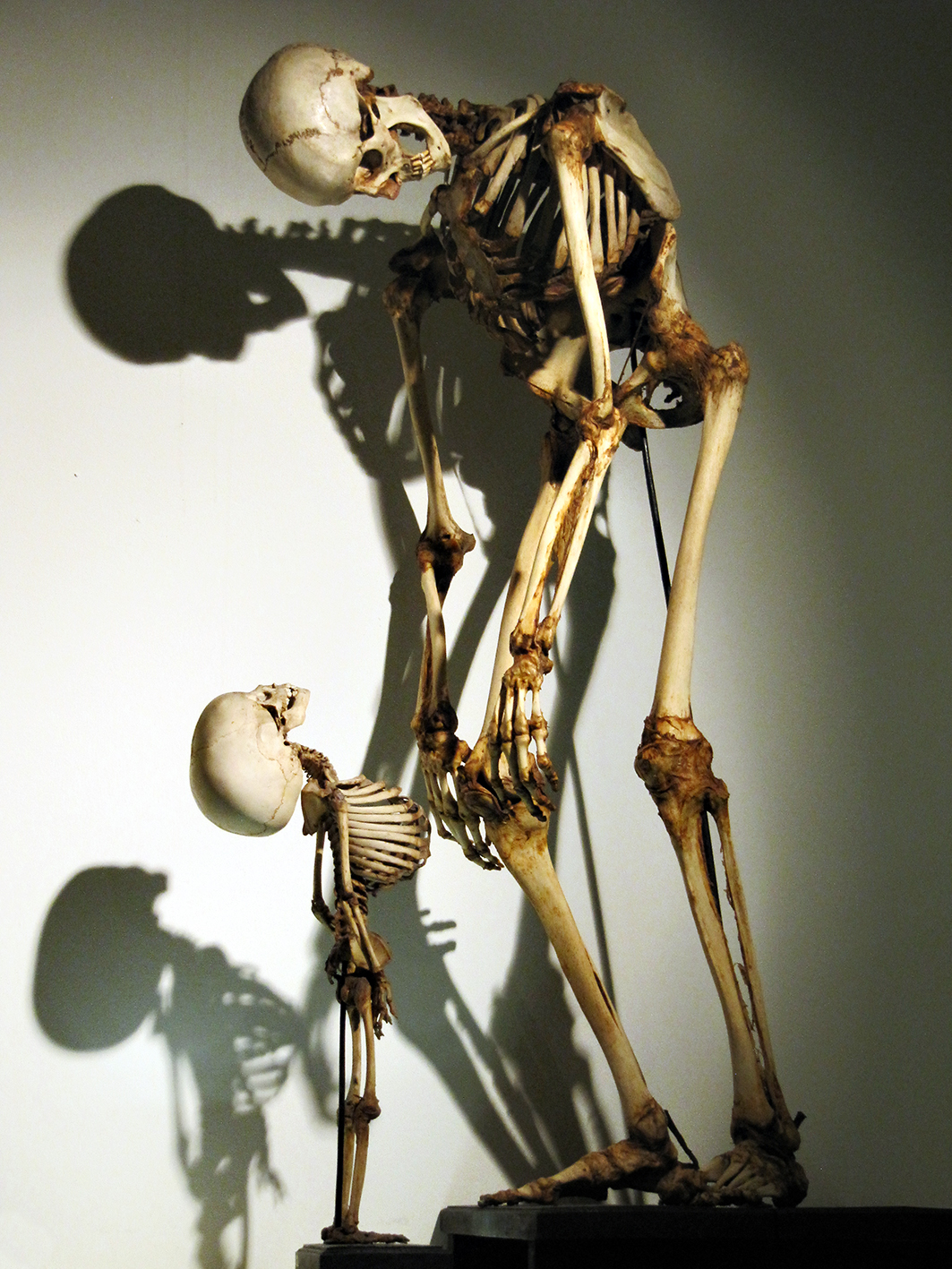 After a warm cup of tea and a cappuccino for Ellen at one of the many coffee-shops in the city centre (no not that kind of coffee-shop you potheads..) we slowly walked to the Universiteits Museum. The entrance lies a bit hidden but luckily Ellen did not have her eyes in her pocket and spotted it. The best thing about this museum is that it is free! That always makes this miserly Dutchman happy. If you are looking for mind boggling art, don’t come here. The museum has an array of objects like medical specimens, models to scientific instruments and ethnological objects. It also has the consultation room of Aletta Jacobs, the first female student in the Netherlands, the first female doctor and the first woman that obtained a doctorate. The most impressive was the anatomy room, where anatomical preparations are organized as an anatomical theatre. A kind of creepy but certainly interesting.
After a warm cup of tea and a cappuccino for Ellen at one of the many coffee-shops in the city centre (no not that kind of coffee-shop you potheads..) we slowly walked to the Universiteits Museum. The entrance lies a bit hidden but luckily Ellen did not have her eyes in her pocket and spotted it. The best thing about this museum is that it is free! That always makes this miserly Dutchman happy. If you are looking for mind boggling art, don’t come here. The museum has an array of objects like medical specimens, models to scientific instruments and ethnological objects. It also has the consultation room of Aletta Jacobs, the first female student in the Netherlands, the first female doctor and the first woman that obtained a doctorate. The most impressive was the anatomy room, where anatomical preparations are organized as an anatomical theatre. A kind of creepy but certainly interesting.
The last museum we visited was the Noordelijk Scheepvaartmuseum. It is located in one of the most beautiful medieval buildings in Groningen, a big merchants-house with a Gothic façade dating back to the 15th century. Until 1 January 2011 it housed the Niemeyer Tobacco-museum. Sadly, in 2010 it was decided to close the tobacco-museum because Niemeyer withdrew their funding for it. It did not fit in British American Tobacco’s (owner of Niemeyer) policies for the future of the company.. Without their funding it was not feasible to keep it open. The collection of the museum has been split up. Articles that the museum had received as a gift or were on loan from people have been, as much as possible, returned. Other important pieces became part of the own collection of the Noordelijk Scheepvaartmuseum or went to other musea. Most of the then remaining items have been sold at an auction at Christie’s in Amsterdam. The few articles that remained are kept in the archives of the Noordelijk Scheepvaartmuseum for safe-keeping. But to my delight I discovered that quite a few of smoking related items were exhibited.
But first a small history about tobacco in Groningen. Once upon a time there were many smaller and larger factories in Groningen which produced chewing or smoking tobacco. During the years a number of them were swallowed by Theodorus Niemeyer, but most companies threw the towel into the ring after a short or longer time. Now once well-known names like Lieftinck, Gruno, Kranenburg and Koning only live forth in memory or on commemorative stones on façades. In 1854 there were (according to an old address-book) 28 tobacco manufacturers in Groningen under which F. Lieftinck and Th. Niemeijer. Both had been active for only a short while. Theodorus Niemeijer started in 1848, after he took over the wholesale business and shop “Het wapen van Rotterdam” from his father.
In 1849 (or 1820, I don’t know precisely..) Franciscus Lieftinck lets his sons, Franciscus jr. and Jan Harmannus, lay the first brick for a tobacco factory in the Raamstraat. Later, in 1893, a bigger one called “Pakhuis De Nijverheid” was build. Franciscus jr. and Ipoje Kranenburg marry 2 De Witt sisters. They are not the only tobacco manufacturers who got mutually related. Also Th. Niemeijer got his (second) wife from the tobacco environment. His marriage to Tettje Heckman offered him the opportunity to take over the business from her deceased nephew Hayo Willem Heckman in 1874. The tobacco industry grew and the manufacturers were erecting new company buildings. E.F. Rost was building a cigar factory and drying room on the corner of the Eeldersingel and Paterwoldseweg. Niemeijer also expanded by taking over the company of J. Swaagman in 1887 and by building a big warehouse at the corner of the Rotterdammerstraatje and the Nieuwe Kerkhof. In 1898 tobacco manufacturer Jan Gruno does exactly the same at the Winschoterkade. Gruno, just like Lieftinck and Niemeijer, was a company that went from father to son. Father Jan Gruno sr. began in “De Blauwe Haan” at the Damsterdiep as a merchant and tobacco-carver. Son Jan jr. moved the company to the Winschoterkade and his sons John Henry and Julius managed the business from 1921.
Companies that did not stay in the family sometimes kept their company or brand-name. This way names of tobacco manufacturers Pieter Koning and Ipoje Kranenburg live on after the take-over by R.A.J. Loot. He starts in a building in the Oosterstraat in 1887 in which first T.B. Kolk and subsequently P. Koning made tobacco. After Loot took over the company of Kranenburg he used the name of Koning as well as the name of Kranenburg for his tobacco factory. The new company building “De Tabaksplant” at the W.A. Scholtenstraat got a tiled painting with the P. Koning name on it. Niemeijer was one of the first to make cigarettes in 1909. At first in the new factory building at the Paterswoldseweg but later, in 1918, from the old Noack meat-factory at the Emmasingel. Despite that this factory closed in 1929, Niemeijers expansion at the Paterwoldseweg continued. Amongst other things the acquisition of Lieftinck in 1932 added to this.
In the 1930’s and during WWII several tobacco companies called it quits. For Gruno the liberation of Groningen city meant the end. This because the Germans entrenched themselves in the high building, so it was destroyed and burned by Canadian artillery fire. Niemeyer (like it is spelled today) was the only tobacco manufacturer from Groningen that remained, but it was no longer a family-company. First British company Gallaher became the owner in 1973 and in 1990 it was sold to Rothmans (who also owned Gruno), who have been bought by British Amercian Tobacco in 1999.
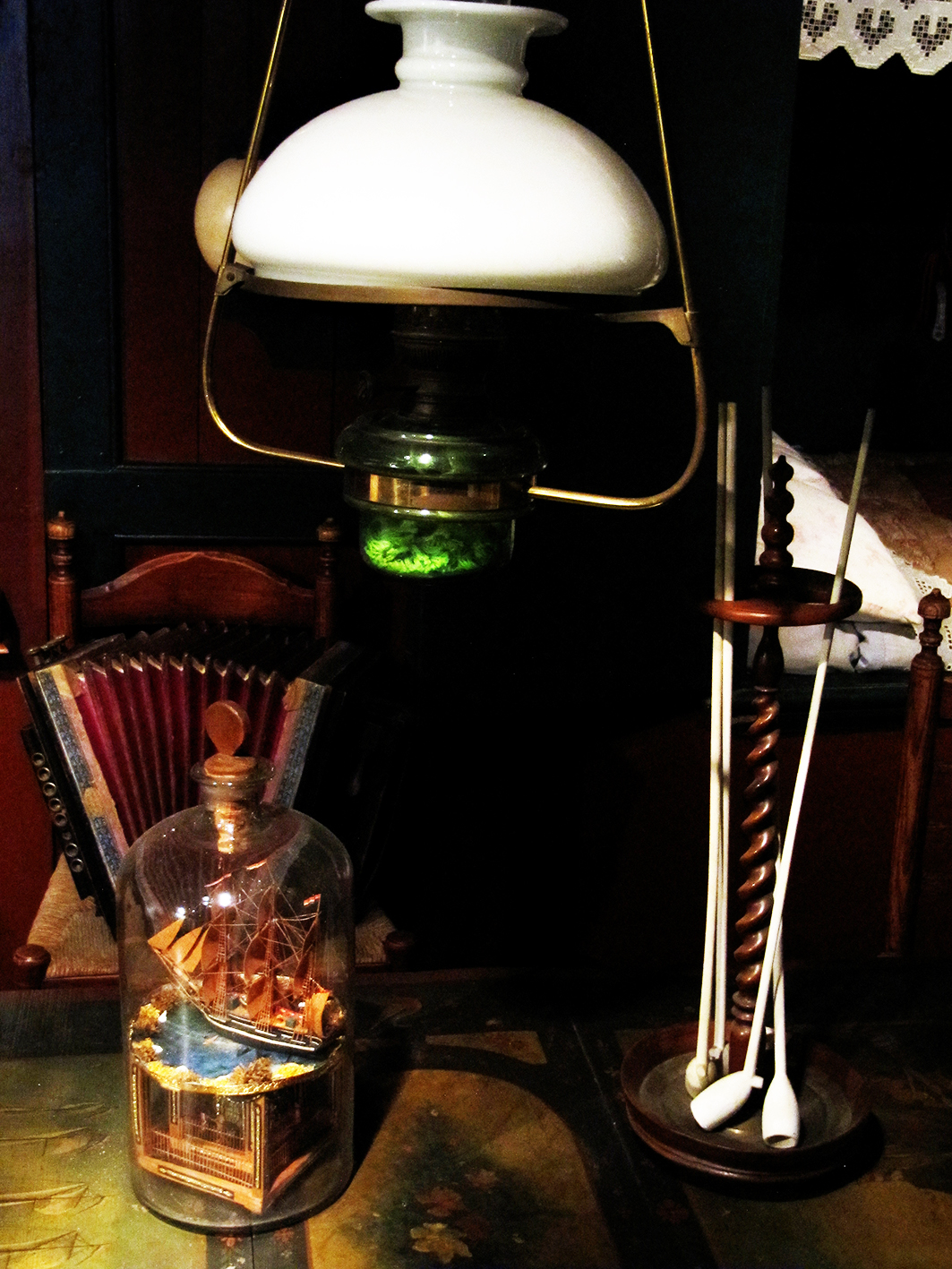 Back to the Noordelijk Scheepvaartmuseum. When we had hung up our coats and paid the very reasonable entrance fee we headed for the basement where there was an exposition about 100 years of advertisement by some Groninger companies. One of the first things I saw were beautiful billboards from Niemeyer where you could recognize art movements like Jugendstil (Art Nouveau) and Art Deco. Just walking through the old building is an experience in itself. If you are larger than about 1.70m, watch out for your head! Back in the day the people were not very large.. If you follow the designated route you are being led to an array of rooms. Everywhere bits and pieces of smoking related items are displayed like nice old snuffboxes from Scandinavia and beautifully decorated clay pipes.
Back to the Noordelijk Scheepvaartmuseum. When we had hung up our coats and paid the very reasonable entrance fee we headed for the basement where there was an exposition about 100 years of advertisement by some Groninger companies. One of the first things I saw were beautiful billboards from Niemeyer where you could recognize art movements like Jugendstil (Art Nouveau) and Art Deco. Just walking through the old building is an experience in itself. If you are larger than about 1.70m, watch out for your head! Back in the day the people were not very large.. If you follow the designated route you are being led to an array of rooms. Everywhere bits and pieces of smoking related items are displayed like nice old snuffboxes from Scandinavia and beautifully decorated clay pipes.
In a corner of one of the bigger rooms I discovered a cell, closed off by wire mesh, with inside all kinds of vintage Dutch (pipe) tobacco packs of brands like Rode Ster, Friesche Baaitabak and Friesche Heeren Baai. I don’t like stealing but if I had a wire-cutter then… Another great find were 2 smoking chairs from 1870. On such a piece of furniture you don’t sit normal. You sit backwards with your arms on the backrest that can be opened. There are 2 compartments in which one can put tobacco. Also the woodcarving on the back is very nicely executed. In conclusion I would like to say: visit that museum!
What I also would like to visit was a tobacco shop. Unfortunately there are not many left in Groningen.. Sadly the oldest tobacconist, A-Kerk, closed its doors last year. Really a shame because the store-building dates back from 1445 and since 1916 a tobacconist has been active there. But a very good alternative is Tabaksspeciaalzaak Homan at the edge of the old city centre. For 54 years the old, now sadly deceased, owner Klaas Homan sold his smoking wares there. Now a young team is active and I think they are doing a fine job. Immediately when I entered the shop I was friendly greeted. I explained that I was a smoking pipe / pipe tobacco blogger and asked if I could snap some pictures. No problem at all. The assortment of the store was impressive! All in The Netherlands available pipe-tobaccos, pipes of brands like Peterson, Vauen and Big Ben, short- and longfiller cigars, cigarettes, hookahs and all kinds of smoking requisites.
I asked the good looking female shop assistant, who turned out to be in charge of the team, if I could have a better look at the pipes. A glass panel was opened so I could take some pipes in my hand. They had some nice Petersons but I managed to restrain myself. I asked the girl what her best selling pipes were. “Surprisingly not Big Ben (a Dutch brand of course) but Vauen is our high seller.” We walked towards the pipe-tobacco corner and she expressed that she was sad that the Scandinavian Tobacco Group are discontinuing several brands. “We have many pipe-smokers here that just like 1 brand and soon we will have to disappoint some of them..” Of course here I also asked what brand was the high seller and it was W.O. Larsen Golden Dream and the Troost tobaccos. Suddenly my eye fell on a pouch of a long discontinued (well, at least a couple of years now) brand that I saw earlier that day in the Noordelijk Scheepvaartmuseum: Rode Ster. It was Homan’s last and probably one of the last in general. So I bought it. Rode Ster was a brand made by Niemeyer and was already popular in the 1930’s. It consisted of Virginia, Maryland and some burley.
Outside the store I met Ellen again, she had not gone inside with me. It was time to relax and have a drink. Nearby was a brewery and I was yearning for a good glass of dark beer. On the lower floors of the Martinus Brouwerij the beer is brewed and on the upper floor you can drink it. There a hip café is located which even had a vinyl turntable that played relaxing smooth jazz. I can recommend their brown beer and pale ale! Around 5 o’clock our bellies began to rumble, dinnertime. My friend Jaap who is living in Groningen now for several years recently had opened a pizzeria there: Lux. But it is not just a regular pizzeria, no, everything is 100% fresh and handmade. No fat soggy big chain pizzas there. Also pretty unique, they have vegetarian and vegan pizzas and pastas. I did not tell Jaap that we were coming so he was pretty (pleasantly) surprised to see us. We had not see each other for some time so while he was cooking and baking we chatted along. I ordered the so called delicious Schweinehund pizza. Tomato sauce, Gouda cheese, onion, ham, salami, bacon, roast beef and a baked egg on top of a golden baked crispy yet chewy hand-knead dough bottom. In all honesty, the best pizza I ever had. Thank you Jaap! With our stomachs filled we thanked Jaap and his charming girlfriend Lana and went for one last drink at an Irish Pub, where I had some tasty Kilkenny beer and Ellen a red wine. Content and happy we toasted on what had been a great day in Groningen.

